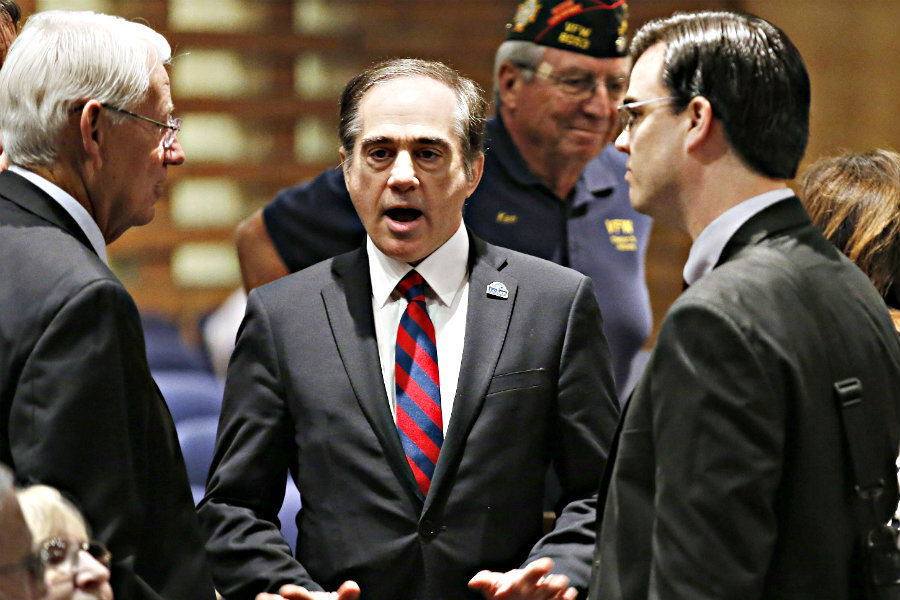What’s being done to prevent veteran suicide?
A new report by the Department of Veterans’ Affairs has put to rest estimates and guesswork about the precise rate at which veterans commit suicide, and opened a whole new discussion of how to best help former servicemen and women. Based on the first nationwide study of its kind, the VA finds that 20 veterans committed suicide each day in 2014.
In 2010, the Department of Veterans’ Affairs estimated the veteran suicide rate to be 22 veterans per day, based on three million medical records from 20 states. Today’s announcement was based on 55 million medical records for every state between 1979 and 2014.
“One Veteran suicide is one too many,” said VA Under Secretary for Health David J. Shulkin in a VA press release, “and this collaborative effort provides both updated and comprehensive data that allows us to make better informed decisions on how to prevent this national tragedy.”
What is the most effective way to approach mental health care for veterans?
“When we get veterans into a comprehensive system of care, that is the most effective thing we can do,” said Dr. Shulkin on a conference call with reporters on Thursday. “Disconnected care is where we have problems.”
Shulkin told reporters that studies show that VA care is actually superior in mental health care to private care in seven of the ten metrics by a measure of 30 percent, as veterans who take advantage of VA care are part of an integrated care system where various care providers are aware of each other.
On the other hand, there are drawbacks to the VA care system.
“The important point is that veterans go home and live in a place,” said Linda Bilmes of Harvard’s Kennedy School of Government in a phone interview with The Christian Science Monitor, “they don’t live in the VA. And it’s an incredibly fragmented landscape of resources that they have to navigate in order to get help.”
Not only is the VA care system a “frustrating labyrinth” of websites and organizations for anybody, but older veterans, who are often less tech savvy than newly returning veterans, can have a difficult time navigating resources.
Often, Dr. Bilmes says, veterans slip through the cracks because VA services are so targeted at veterans who already have demonstrated a serious problem that they miss those veterans who simply need a “bannister to hold on to” and are not ready to reach out to a specifically targeted program.
Still, the VA’s study shows that VA care seems to be making a difference for many veterans, with significantly lower suicide rates among veterans receiving VA care when compared with veterans who are not. Since 2001, the rate at which veterans receiving VA care committed suicide was 8.8 percent, while veterans not receiving care committed suicide at a rate of 38.6 percent over that period.
Since 2014, Shulkin told reporters, the VA has redoubled its efforts to help veterans in need of mental health care. The VA has created public awareness campaigns about the problem of suicide and created a crisis line (1-800-273-8255) that veterans can call if they need help.
A new system of urgent mental health evaluations allows VA doctors to establish same-day mental health risk alerts, and in the fall of 2016, doctors expect to be able to use a new program known as predictive risk assessment to use a database of medical information to predict veterans at risk of suicide.
The VA is also trying to decrease the stigma of seeking mental health care, which RAND Corporation analyst Rajeev Ramchand told the Monitor often deters veterans from seeking help, as they don’t want to be seen as weak, preferring instead to handle their problems themselves.
“The stigmatization of mental health issues is a barrier to access,” Shulkin told reporters, adding that the VA has attempted to remove this stigma by creating forums, such as Make the Connection for veterans to share their stories with an audience of their peers.
There are good programs out there, at the federal governmental level, and at the nonprofit and local levels. The most important thing, some experts say, is to better the collaboration among them.
“We have to change the way that the federal government, state government, and nonprofit sector work together at the local level,” says Bilmes.
The report shows that the suicide rate among veterans has decreased as a percentage of the veteran population from 22 percent in 2010 to 18 percent in 2014, though the 2010 estimate was based on a smaller sample of medical records than the most recent study.
“This is the first time that we have national data on veteran suicide,” Dr. Ramchand said by phone. “The VA has wanted to get better data on what the suicide rate looks like among the military population for a long time.”
On a conference call with reporters on Thursday, Shulkin added that while the suicide rate among veterans appears to have decreased between 2010 and 2014, the veteran population is also declining. The civilian suicide rate and the veteran suicide rate have both increased since 2001, with the suicide rate among civilians increasing by 23 percent, and the rate among veterans increasing by 32 percent.






